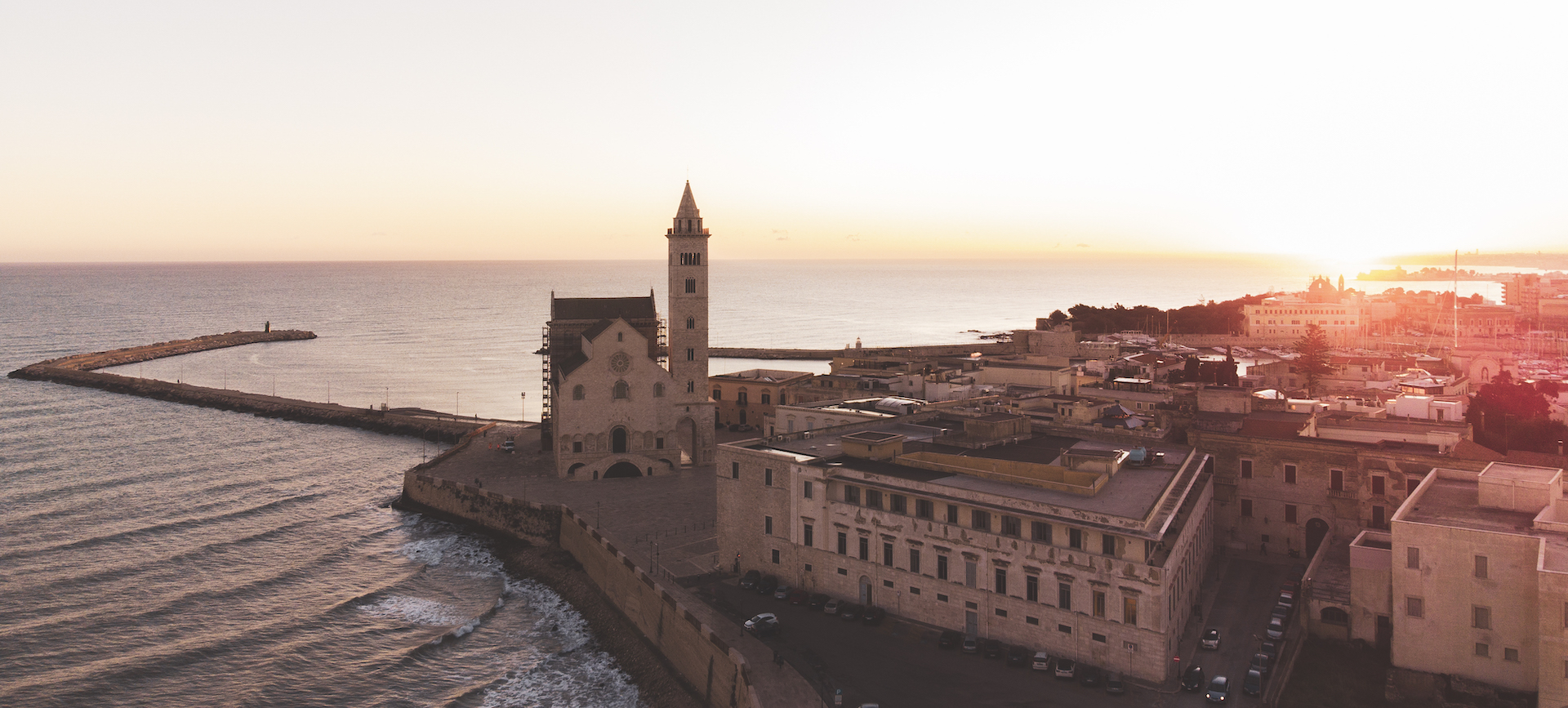
Attractions
The city of Trani boasts a number of places of tourist interest, as well as many restaurants where you can taste and enjoy Mediterranean cuisine. Among the historical and archaeological sites we can mention:
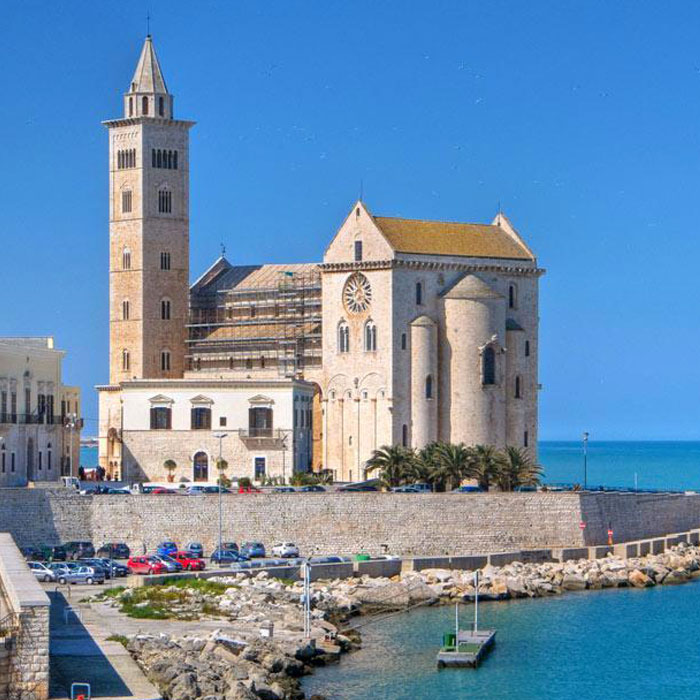
CATHEDRAL OF TRANI
The Cathedral of Santa Maria Assunta (Cathedral of Trani), sometimes referred to as Santo Nicola Pellegrino, is the main Catholic place of worship in the city of Trani.
It is an example of Apulian Romanesque architecture. Its construction is linked to the events of San Nicola Pellegrino, dating back to the era of Norman domination.It was built using the stone of Trani, a building material typical of the area
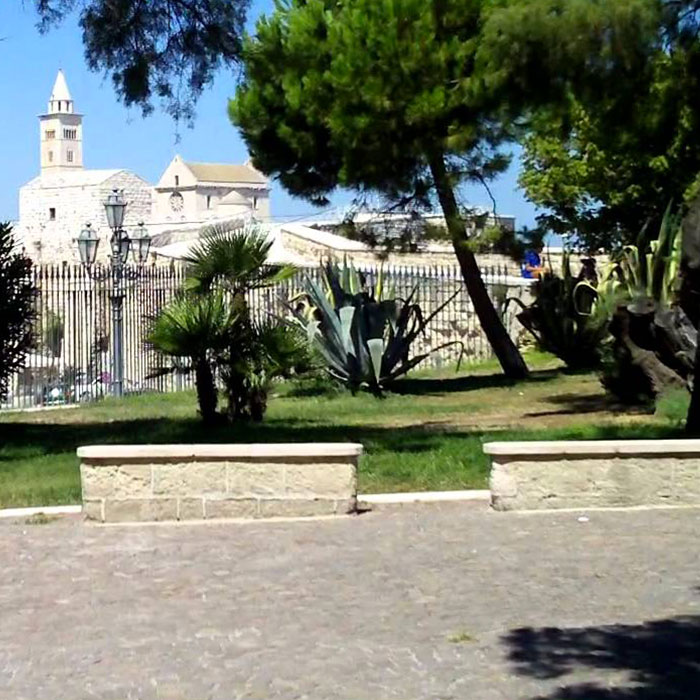
MUNICIPAL VILLA
The Villa is located in a spectacular position, it is a terrace overlooking the sea and near the historic center.
Inside there is a space equipped for children’s games, an outdoor fitness area, a sound box, a chalet that can be used for exhibitions and ceremonies, an aquarium and an aviary.
The area is planted with palm trees, holm oaks, oaks and marine pines. Inside the Villa there is a small spice garden from Europe and the Mediterranean basin.
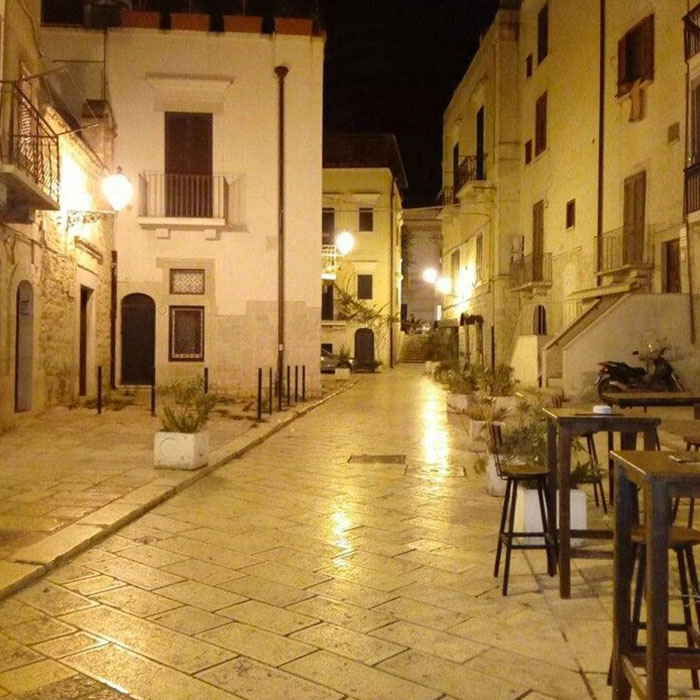
TOWN CENTRE
Stroll through the alleys of the historic center, and enjoy the view from the gardens of the municipal villa overlooking the sea.
In the heart of the historic center of Trani, we find the ancient Jewish quarter, the Giudecca. Walking along via la Giudea, we find the oldest synagogue in Europe, which dates back to 1242. up to the ancient gateway to the medieval quarter of Giudecca where you can visit the museum in the church of S. Anna.

CHURCH OF OGNISSANTI
The church of Ognissanti, or of the Templars, is a Romanesque church of Trani from the 12th century located on the shore of the port. The church is also called “del Purgatorio”.
Local tradition and historiography refer to the church of Ognissanti as a domus of the Templar Order, built inside their hospital during the period of the Crusades. Although the presence of the Templars in the city in that period is historically established, there are no historical documents that lead the church of Ognissanti directly to the Templars.
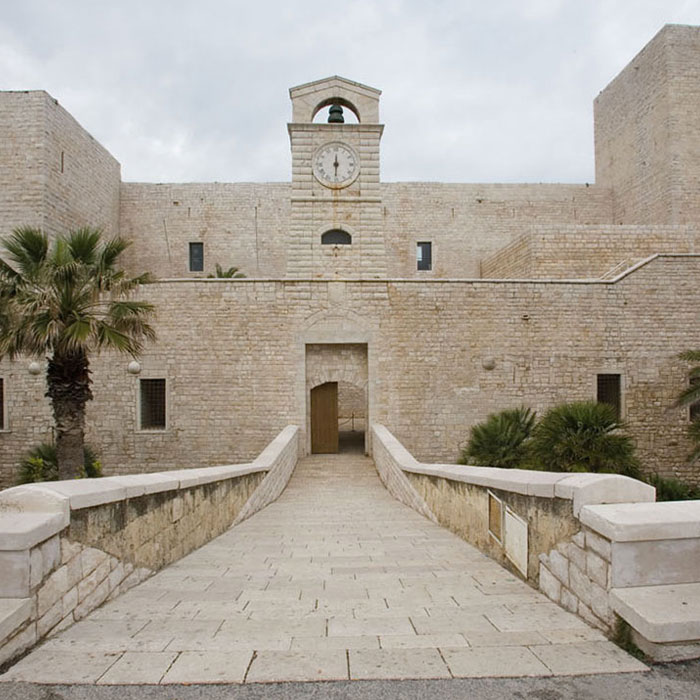
CASTLE OF TRANI
The Swabian castle of Trani was built in the city of Trani in 1233, under the reign of Frederick II of Swabia.
Starting from 1832 it underwent a series of works for the transformation into a provincial central prison, opened in 1844; it maintained this function until 1974 and in 1976 it was handed over to the Superintendence of Environmental and Artistic Heritage of Puglia. It was subsequently subjected to restoration work starting in 1979 and was opened to the public on June 5, 1998
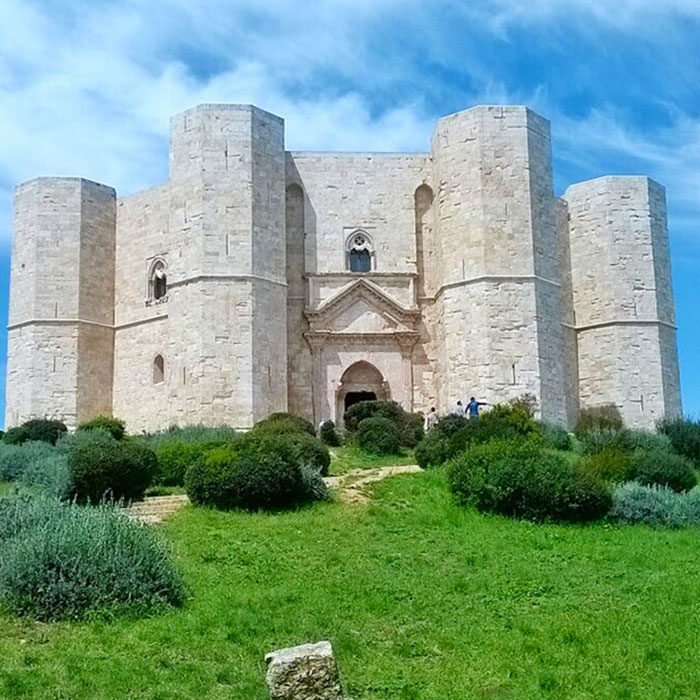
CASTEL DEL MONTE (Andria)
UNESCO heritage, just 38 km away.
Castel del Monte is a 13th century fortress built by Frederick II of Swabia, Holy Roman Emperor and King of Sicily, on the top of a hill 540 meters above sea level in the western Murge plateau in Puglia. It is located in the homonymous hamlet of the Italian municipality of Andria (BT), located 17 km from the city, near the town of Santa Maria del Monte.
The building has an octagonal plan and an octagonal turret is inserted at each corner
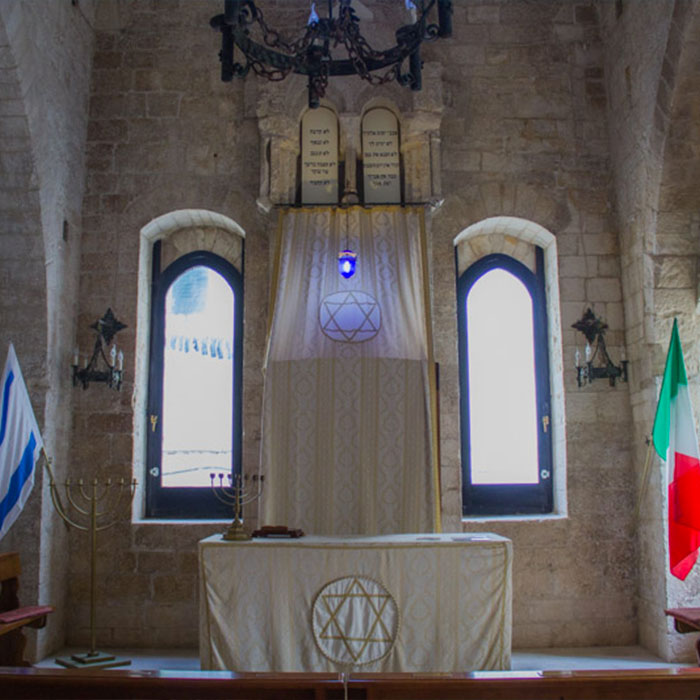
SYNAGOGUE SCOLANOVA
In the ancient Jewish quarter of Trani there were four synagogues which were converted into churches in the 16th century as a result of the expulsion of local Jews. The Scola Nova synagogue is one of the two surviving buildings with the Sant’Anna synagogue-museum.
The ScolaNova synagogue was built in the 13th century. The building is built in limestone masonry. The entire building is dominated by a bell gable in turn surmounted by a tympanum on which stands a wrought iron star of David.
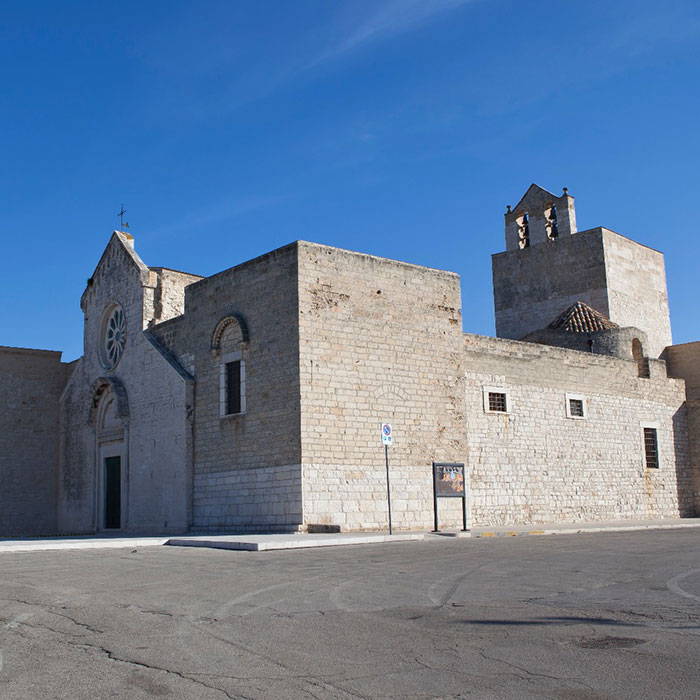
MONASTERY OF S. M. DI COLONNA
The monastery of Santa Maria di Colonna is a monastery in Trani located on a peninsula called “Capo Colonna”. A Romanesque church is adjacent to the monastery.
Among the numerous pirate raids, undoubtedly the most famous is that of May 3, 1480, when a wooden Crucifix was stolen by the pirates: once Christ’s nose was mutilated, it began to bleed and was thrown into the sea. The event is commemorated every May 3 with a procession of fishing boats that take from the monastery to the quay of the port with the Crucifix on board to give way to the solemn patronal procession.


